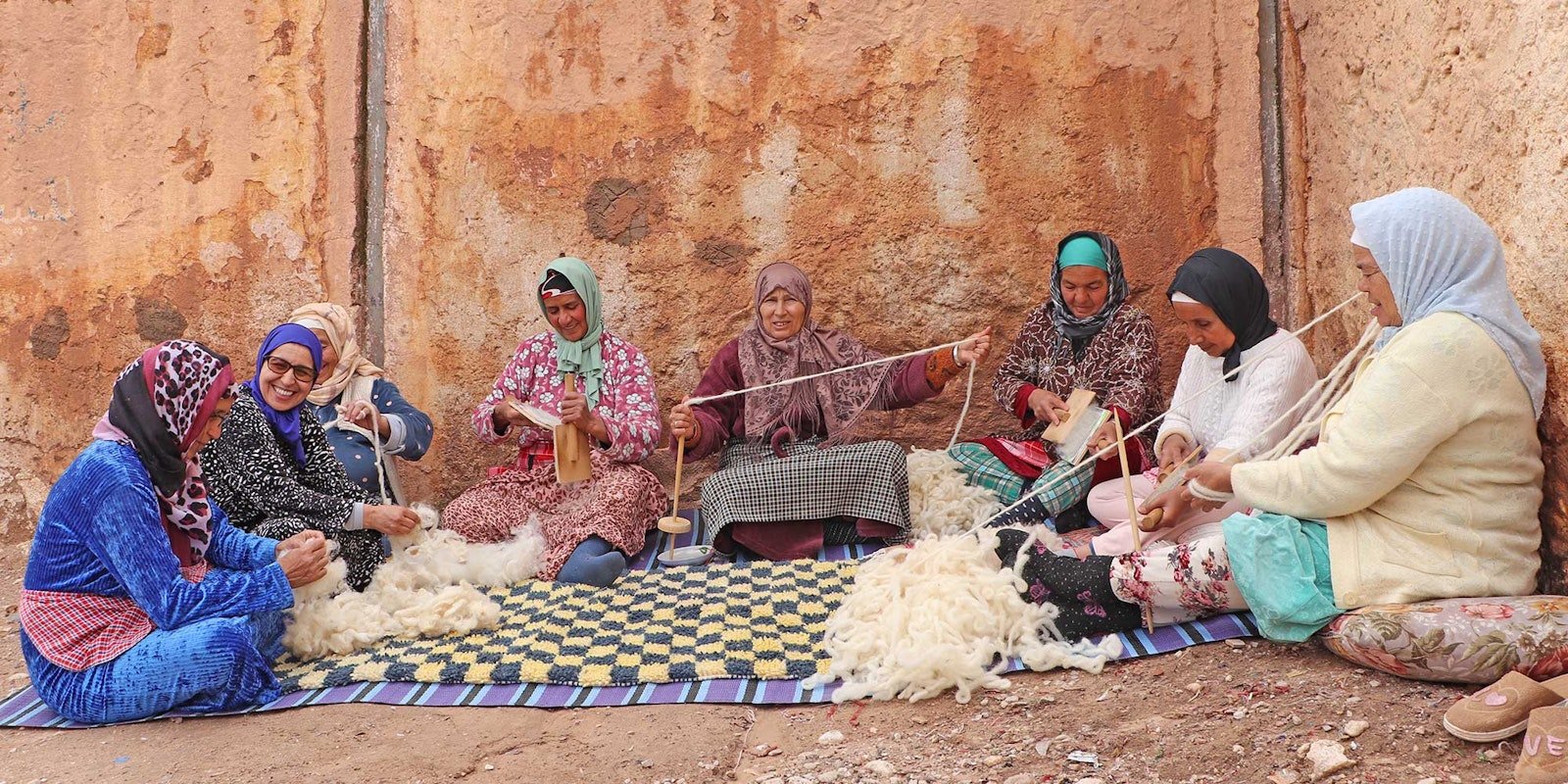Spin Off contributor Karen Elting Brock lived and worked in Morocco for two years, traveling the back roads as often as she could. In the Winter 2024 issue, Karen wrote about twiza, a Moroccan tradition connected with wool, spinning, and communal work. Here, Karen shares the story of her visit to the artisan cooperative known as Association Tithrite, where she learned about the people, the fibers, and the textiles they create.
The photographer who accompanied Karen, Yassine Bouhouch, filmed the artisans at work, and we’re excited for our readers to be able to hear from the cooperative members in their own words. Get a peek behind-the-scenes below and then scroll down to watch the interviews with the founder of Association Tithrite and to watch the members at work. —Editors
I learned about photographer Yassine Bouhouch as I learned about so many things in Morocco, from Loubna. I met Loubna a few years ago when I began teaching English at Al Akhawayn University (AUI) in Ifrane, Morocco. Loubna was a friendly colleague who quickly became a close friend. Her gregarious love of life, generosity, and uncanny linguistic skills helped me discover Morocco. She’s one of the most socially connected people I’ve ever met. When I told her I needed a photographer for an article I was writing, of course she’d said, “I know someone.”
A few weeks later, she, Yassine, and I were driving out of Ifrane to visit the Association Tithrite artisans in the village of Ait Hamza to learn about twiza, the ancestral tradition of working together, of cooperation. Yassine is an honors graduate of AUI and has been teaching photography labs and design courses since. He and Loubna had worked on a few university projects together and were collaborating on a new media course. He’s talented, she’d said, and so kind.
During the hour-long drive, Yassine asked our driver to stop often so he could photograph the landscape, sheep, mountains. As a Moroccan, he was simply photographing everyday life but clearly understood his role in depicting the wider view to a largely non-Moroccan audience.
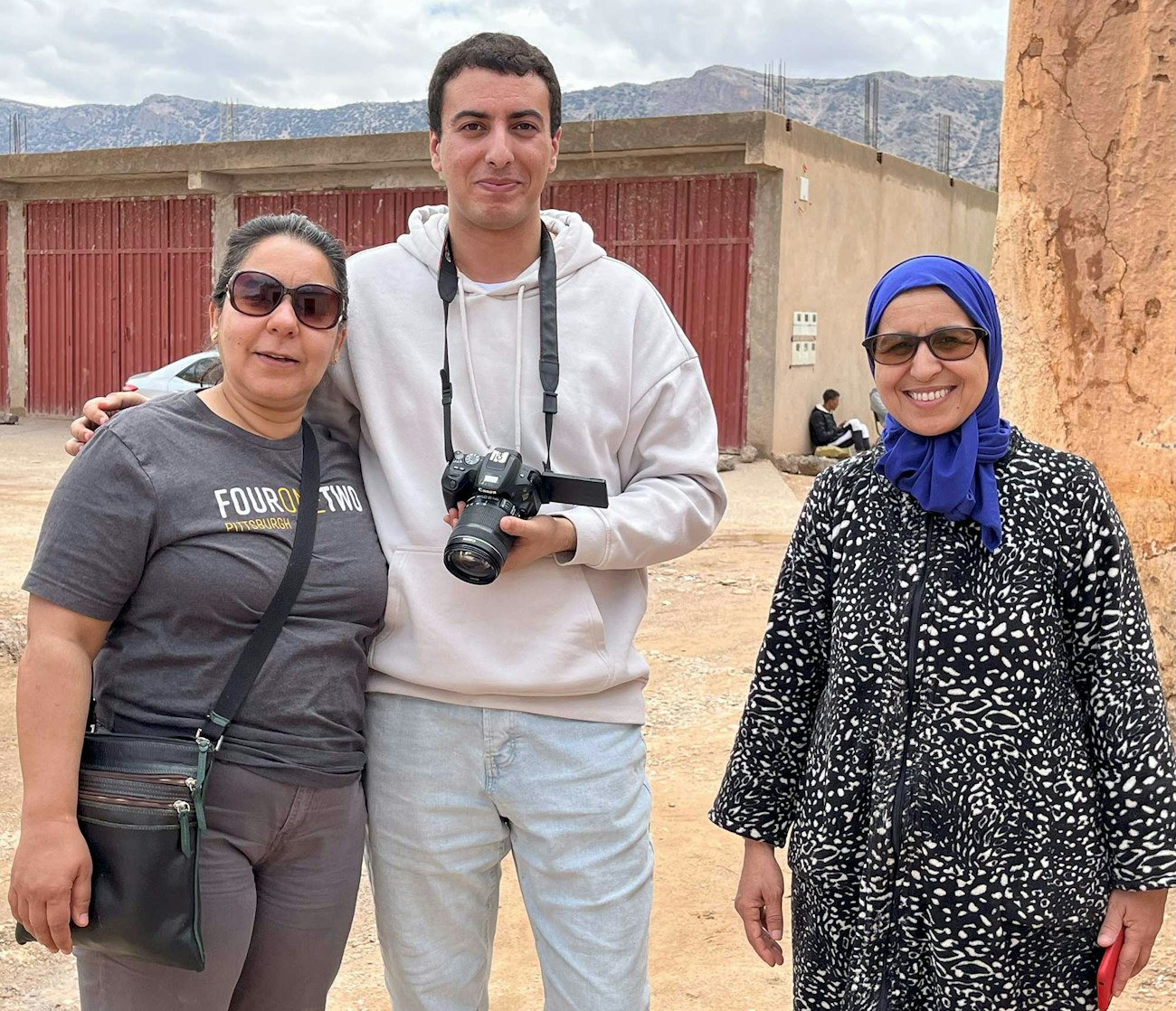 Loubna, Yassine, and Kenza Oulghada, leader of the Tithrite Association in Ait Hamza; photo by Karen Brock
Loubna, Yassine, and Kenza Oulghada, leader of the Tithrite Association in Ait Hamza; photo by Karen Brock
When Kenza the Association leader met us at the edge of the village, Loubna and Yassine immediately put her, and later the weavers, at ease, speaking greetings in Darija (Moroccan Arabic) and laughing. Kenza’s English is strong, and I easily understood her explanations about twiza and her translations of special songs. But Loubna and Yassine heard beyond these literal translations, understood greater meaning in the singing, the tone of voice, the chuckles, the silence, the generosity in pouring the mint tea. They were indispensable for my understanding.
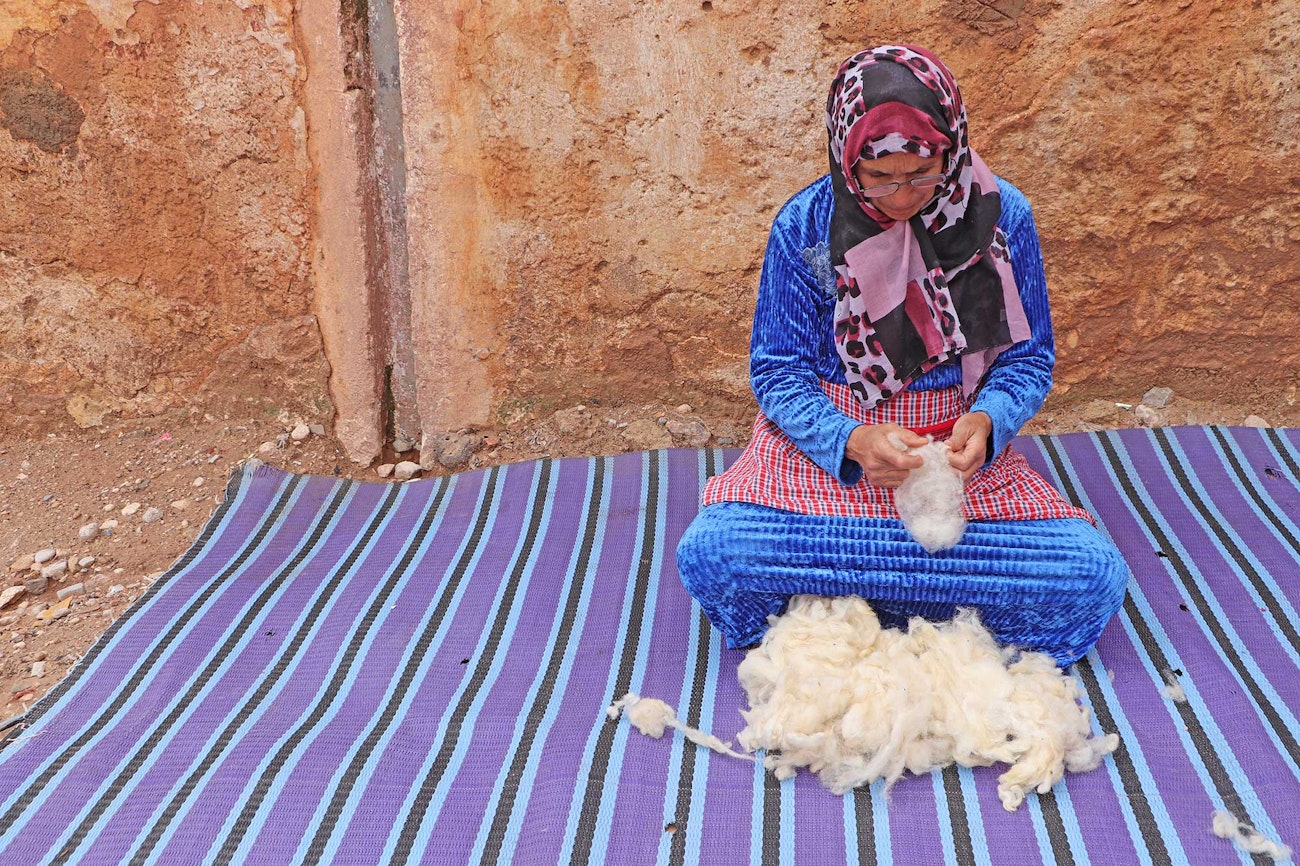 Itto Amzil sits outside Association Tithrite’s building preparing the fleece for carding, gently separating the individual fibers.
Itto Amzil sits outside Association Tithrite’s building preparing the fleece for carding, gently separating the individual fibers.
Yassine was indeed kind, showing deference to the artisans. He was gentle when giving them directions as he moved them, their looms, and piles of rugs around, frequently making them smile. He was patient as he propped the door open to let light into their dark workshop, eventually suggesting they move outside where the light was better. Yassine was also patient with the curious onlookers from the village, happily photographing Kenza with the oldest weaver in the village when she wandered by and wondered who we were. She left, giving all of us hugs before she ambled down the alley.
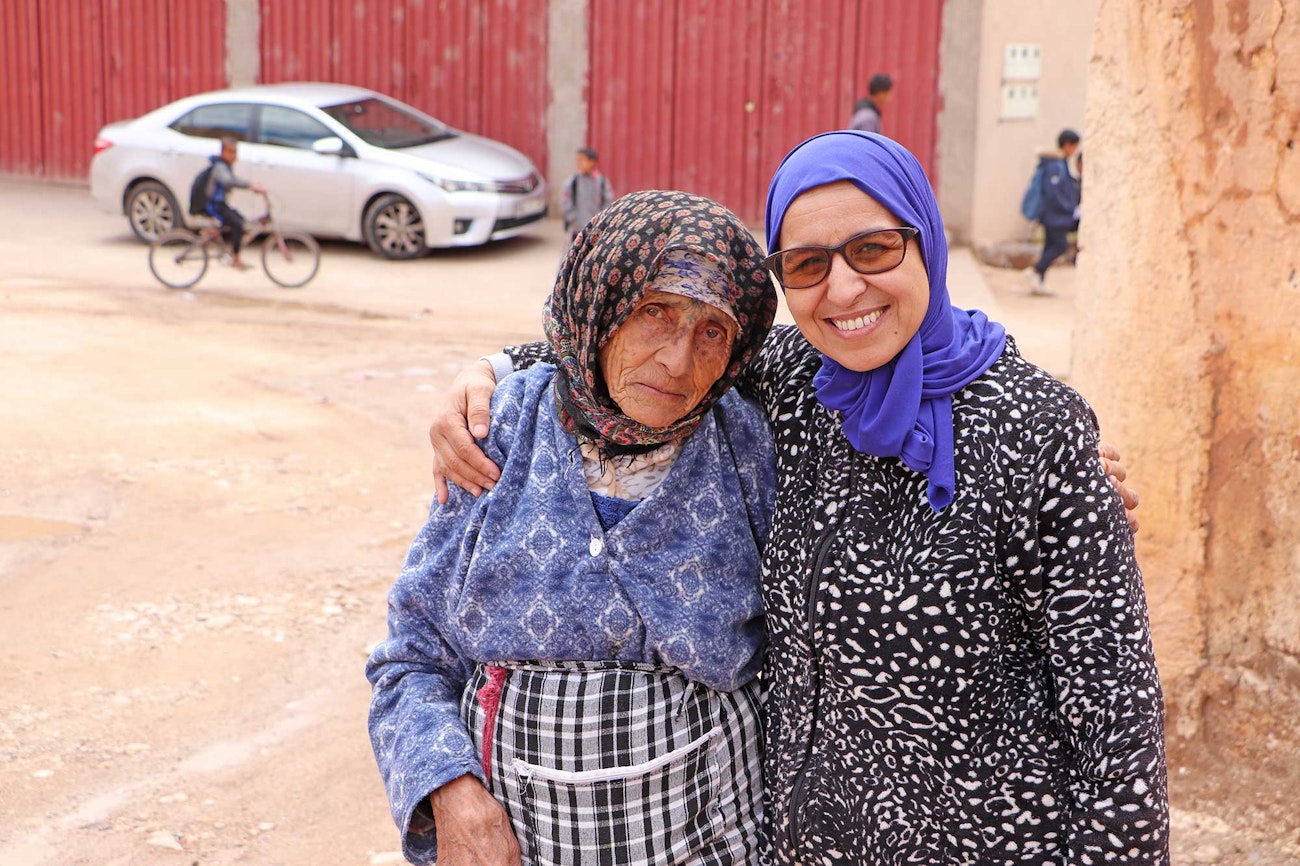 Kenza with Itto Haddo, the oldest weaver in the village of Ait Hamza. Photo by Yassine Bouhouch
Kenza with Itto Haddo, the oldest weaver in the village of Ait Hamza. Photo by Yassine Bouhouch
Yassine shot a few hundred photos that day, maybe more, and several videos. Planning out our day in advance, he’d had the idea to interview a few of the women individually, hoping for their perspectives on twiza. We interviewed only women who could also speak Darija (in addition to their native Tamazight) because Loubna would translate the interviews to English and was more comfortable speaking Darija, the first of her many languages. Loubna and Kenza communicated the questions to two of the artisans who talked at length about what twiza means to them while Yassine shot the video.
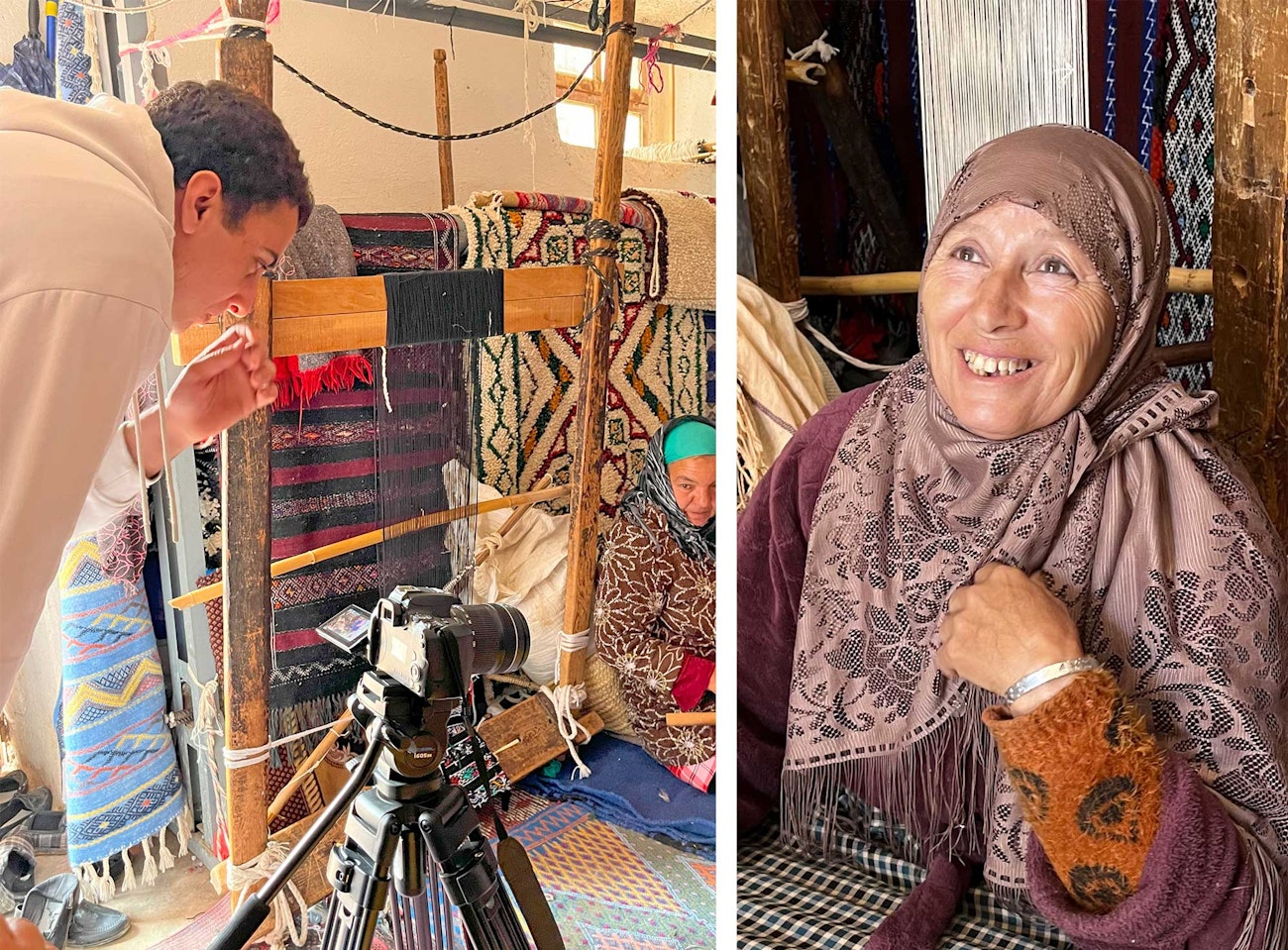 Left: Yassine setting up his camera inside the Tithrite Association’s workshop while Itto Benhammi looks on. Right: Fatima Oukhallu flashes a grin at Yassine as he prepares for her video. Photos by Karen Brock
Left: Yassine setting up his camera inside the Tithrite Association’s workshop while Itto Benhammi looks on. Right: Fatima Oukhallu flashes a grin at Yassine as he prepares for her video. Photos by Karen Brock
Back in Loubna’s apartment in Ifrane, she and I played the videos; she translated from Darija to English as I transcribed her translation. Amidst her literal translations, she offered subtext of their words which proved quite helpful in writing the article. Then I sent the English text to Yassine who integrated it into the videos as he edited them.
Yassine translated the twiza ritual of working the wool through his camera lens; Loubna translated the languages; and both translated a piece of Morocco and their heritage, proud and happy to share it with a wider world. So much can be lost in translation, but if you have the right people by your side and if you pay attention, their translations will give you the world.
Learn more about twiza, about the artisans featured here, and about The Anou Cooperative, which supports artisan communities throughout Morocco by connecting makers and markets, in the Winter 2024 issue of Spin Off.
Karen Elting Brock taught English at Al Akhawayn University in Morocco for two years where she traveled the back roads of the country as often as she could, admiring traditional craft and traditional life. She would like to thank her colleague Professor Loubna El Abbadi for her valuable assistance in both language and cultural translation while visiting the arti-sans of Association Tithrite.
Yassine Bouhouch is a 23-year-old Moroccan with a passion for photography, graphic design, and film production. He holds a BA in Communication Studies from Al Akhawayn University in Morocco. He works as a lab instructor of digital photography and graphic design at Al Akhawayn and hopes to pursue an MFA abroad in either screenwriting or filmmaking.

